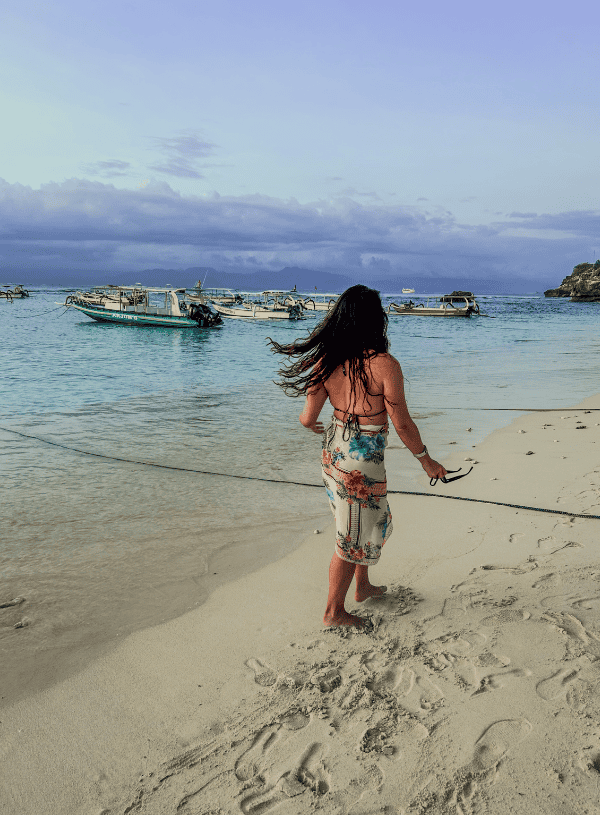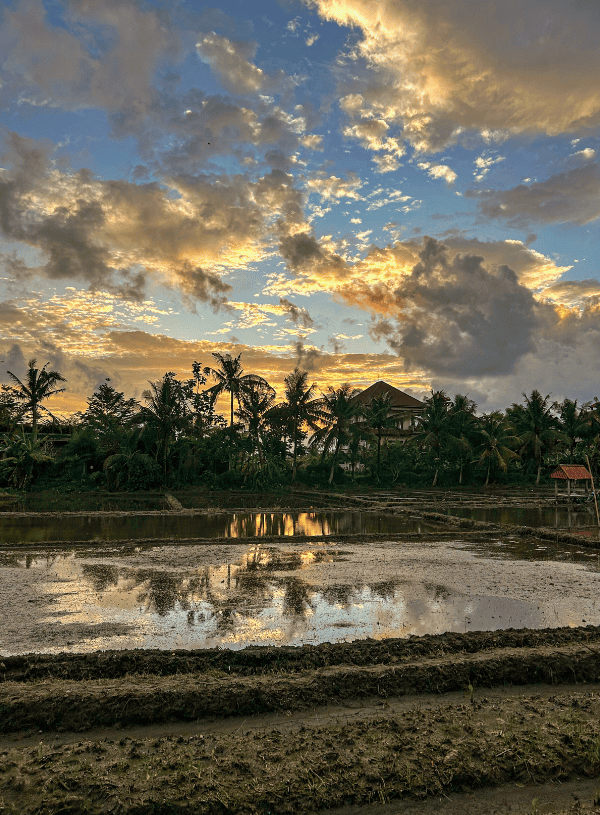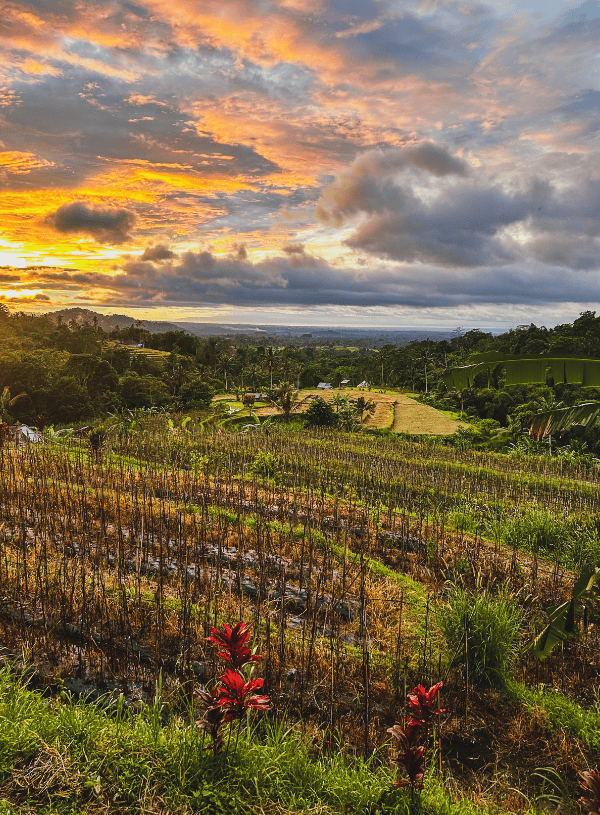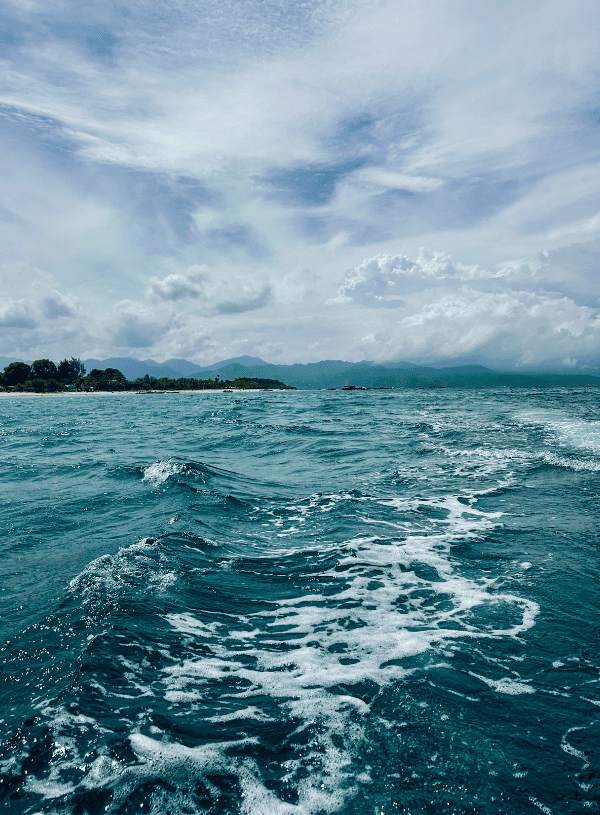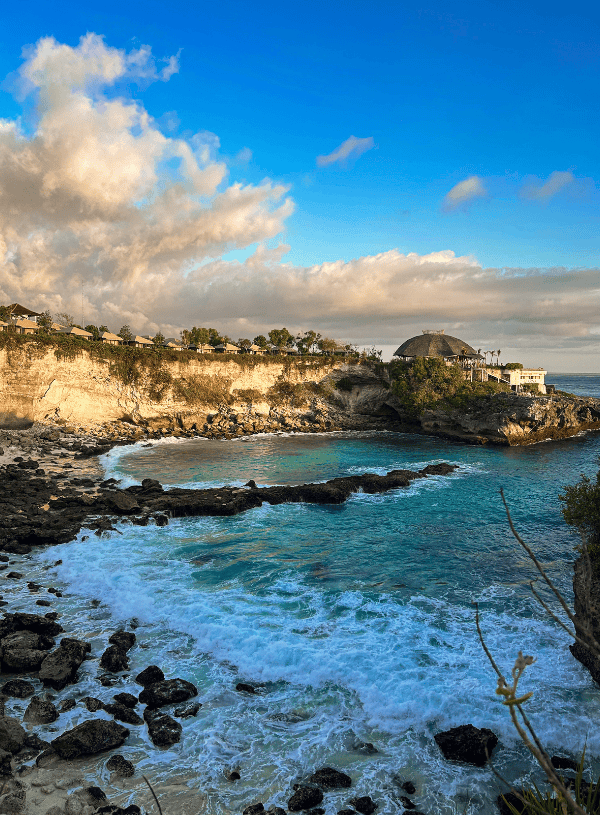Balinese Purification Ceremony: A Meaningful Way to Celebrate New Beginnings in Bali
Last Updated on September 27, 2025
Since coming to Bali for the first time, I had always wanted to experience the Balinese purification ceremony, also known as Melukat. But when I visited Pura Tirta Empul, the most famous temple for this ritual, it just didn’t feel right… Too chaotic, too many people, and too many tourists doing it just because “that’s what you do here”. So, I waited.
That moment came exactly one week after I moved to Bali. Right before settling into my new apartment in Ubud, and after a night dealing with the biggest cockroach ever in my guesthouse (trust me, a lot of negative energy needed to be cleared).
The day before, I booked my purification ritual at Pura Mengening, and in this blog post, I’ll share exactly how it went and how you can book the same experience if you feel called to do it. If you believe in the power of rituals as a fresh start, this is one of the most beautiful ways to experience that in Bali, in the right way.
This article may contain affiliate links. This means that if you purchase through one of the links, I may be paid a small commission at no extra cost to you. Thank you for supporting the blog and allowing me to keep sharing meaningful travel experiences with you.
Don’t have time now?📌 Save it for later!

What’s The Melukat Ceremony?
The Melukat is the Balinese ritual practiced to release negative energy and emotions connected to past traumas or unprocessed experiences.
The ritual begins with chanting mantras and a moment of meditation, followed by prayers. Then comes the most personal part — when you express what you want to release: sadness, sickness, insecurities, or anything else that feels heavy inside.
After that, you can also set an intention for what you wish to welcome into your life: love, abundance, clarity, or whatever feels aligned for you. Finally, by bathing in the pools where the water from the holy springs is flowing, you allow the negativity within you to be washed away.
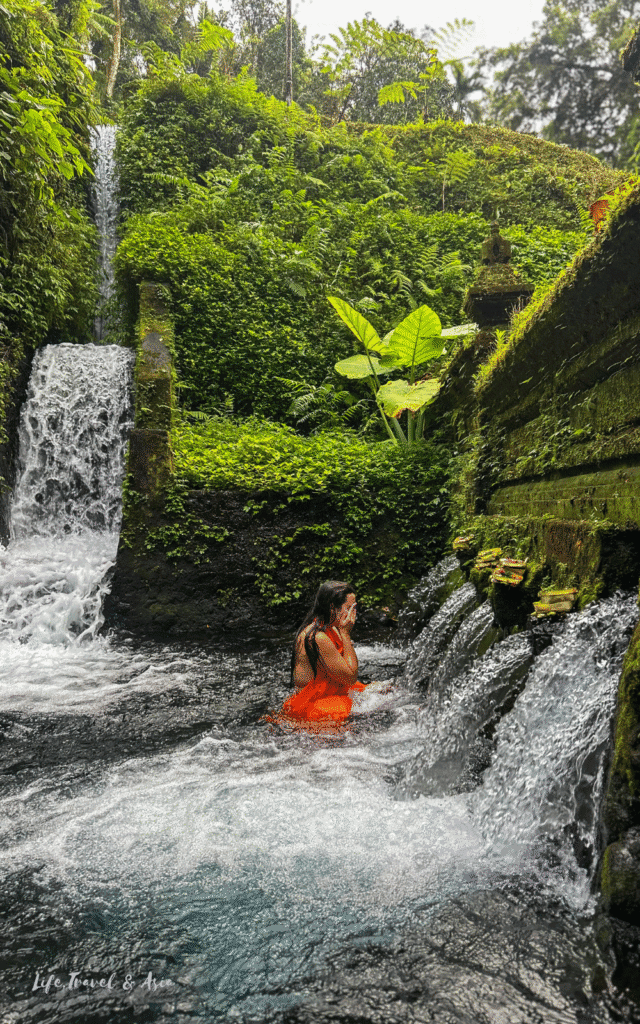
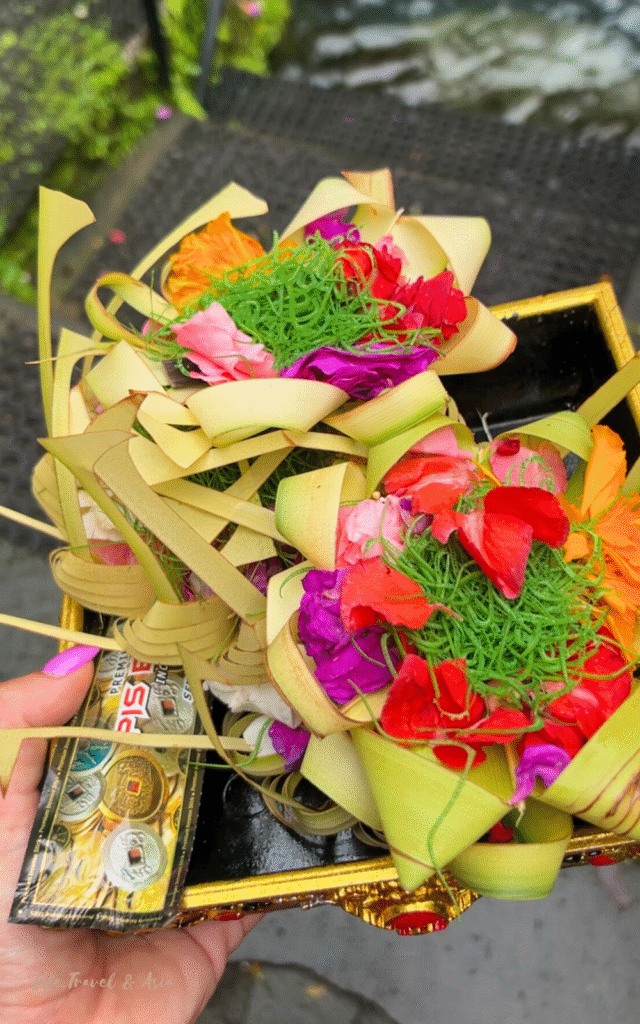
As my guide explained, the ritual is a personal matter. Everyone carries different stories and wounds, so it’s essential to focus on yourself, on what you want to heal and let go of.
I also believe there’s no “right” way to do it. You don’t need to stress about understanding every single passage or word your guide says (which, let’s be honest, isn’t always easy anyway lol). You just need to connect with your inner self and be clear about what you’re ready to release.
How to Prepare for the Temple Purification in Bali
Inner Preparation
I highly recommend taking some time for inner reflection. Try to identify what no longer serves you so that you can step into a lighter, happier version of yourself.
It could be insecurities holding you back from pursuing your dreams, unhealthy attachments preventing you from stepping into your higher self, or traumas from past experiences that you’re finally ready to release.
By taking a moment to reflect, you’ll know what to ask for during the ritual.
What to Bring for The Ritual
You can arrive dressed however you like. Once you arrive, your guide will dress you in traditional clothing, including a sarong, a sash, and a top (at least for the ladies — I didn’t notice the traditional male clothing).
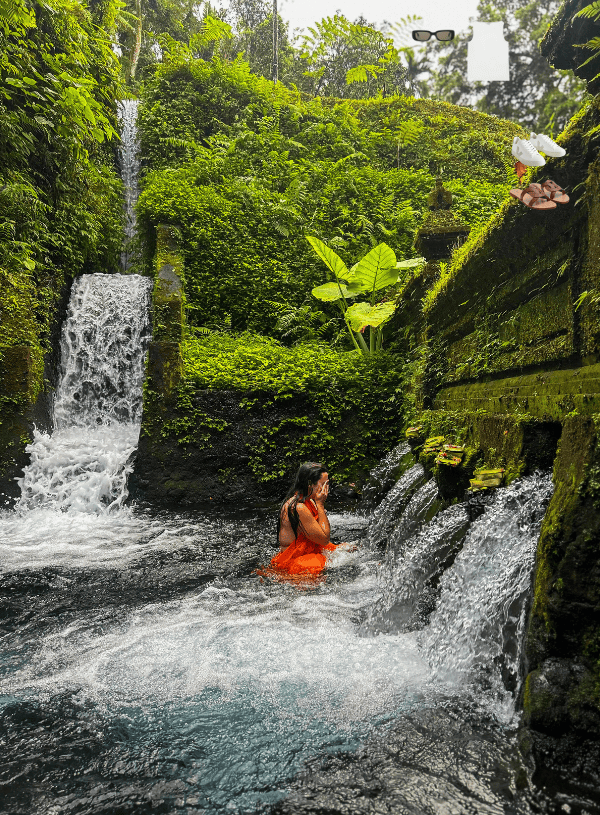
Make sure to bring a swimsuit, as they will provide you with a different cover-up to wear during the ritual itself (which is not the same as the traditional outfit they give you at the beginning).
It’s also a good idea to bring a couple of towels to dry off after the ritual, and if you want, a change of clothes. I didn’t really need it, but I liked the idea of symbolically stepping into the “new me,” free from all the negative energy, so I changed into fresh clothes after.
How to Get To Pura Mengening
The temple is located about 35-40 minutes from Ubud, not far from Tirta Empul. You can use Grab to book a scooter ride and ask the driver if he can wait for you and bring you back — it’s much easier and faster than trying to get a Grab from there afterwards, as the temple is a bit further out.
In my case, I didn’t even have to ask — the driver offered to wait for me.
Depending on the time you book your purification ritual, consider potential traffic so you can arrive on time for the ceremony. The entire experience will last around one hour.
Heads-Up!
The water is cold, even with Bali’s hot weather. So I suggest having a light breakfast if you’re doing the ritual in the morning, or not eating at all, like I did, to avoid feeling sick.
Where to Practice the Balinese Purification Ceremony?
In Bali, there are several places where you can experience the Melukat Ritual. The most common are the sacred water temples, but some ceremonies also take place in natural rivers, at waterfalls, or even by the sea.
Pura Tirta Empul
One of the most well-known — and definitely the most touristy — temples where you can practice the Melukat is Pura Tirta Empul. But when I visited it for the first time, the whole atmosphere didn’t feel right to me. Maybe it was the wrong time of day, perhaps it was the wrong guide… or maybe it just wasn’t meant to be.

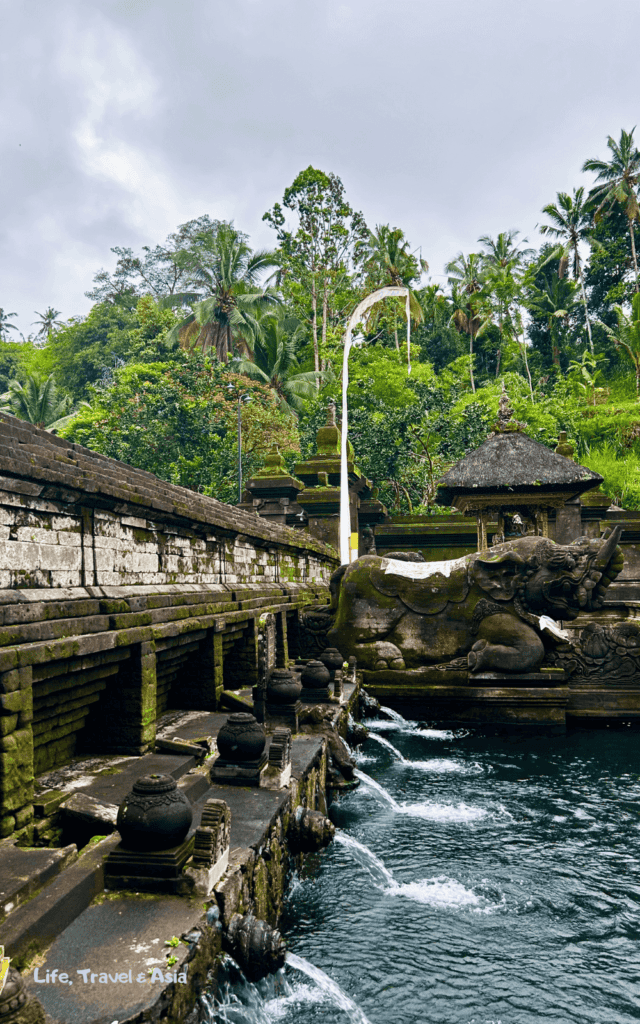
Pura Tirta Empul is a classic Balinese-style temple featuring three courtyards, with the ritual pools situated in the second courtyard. While the temple itself is stunning and worth a visit, I personally wouldn’t recommend it for the purification ritual.
Even though it’s the most famous place for Melukat, the atmosphere there feels chaotic, messy, noisy, and honestly, not spiritual at all. My guide confirmed that locals don’t go there for Melukat, and he personally never brings visitors to that temple for the ritual, because it’s simply not the right environment to experience it in the right way.
Pura Mengening
Pura Mengening couldn’t be more different. The temple’s structure is quite unique. You reach the pools by walking down a staircase that leads you downstream. The pools are not part of the main temple structure, which stands at the top of the stairs. Unfortunately, visitors can’t enter the temple itself, but you can walk up to have a look.
At the beginning of the stairs, you’ll find two pools: one filled with koi fish and the other with holy spring water.
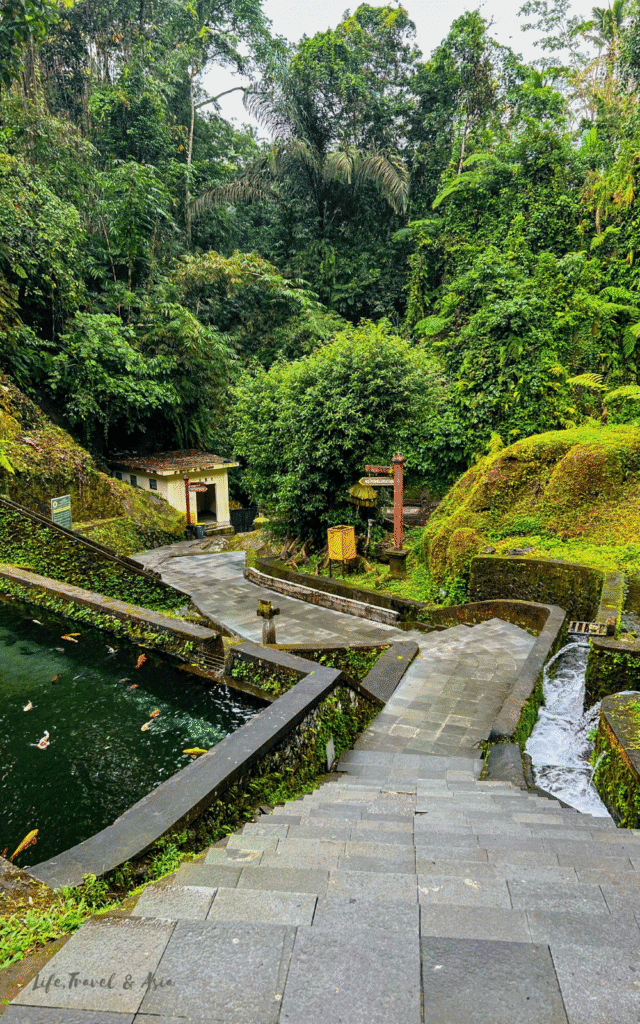

As you continue down the steps, you’ll see more pools and arrive at those where the Melukat ritual takes place. The natural beauty of this temple is undeniable. It feels like it was born directly from the jungle, with waterfalls, natural springs, and greenery all around.
The temple blends into the environment, entirely surrounded by the forest and following the curves of the landscape.
But the most significant difference is in the atmosphere. I arrived at the temple at 8 AM, and there was no one there, except for me and two Balinese ladies who had just finished their ritual.
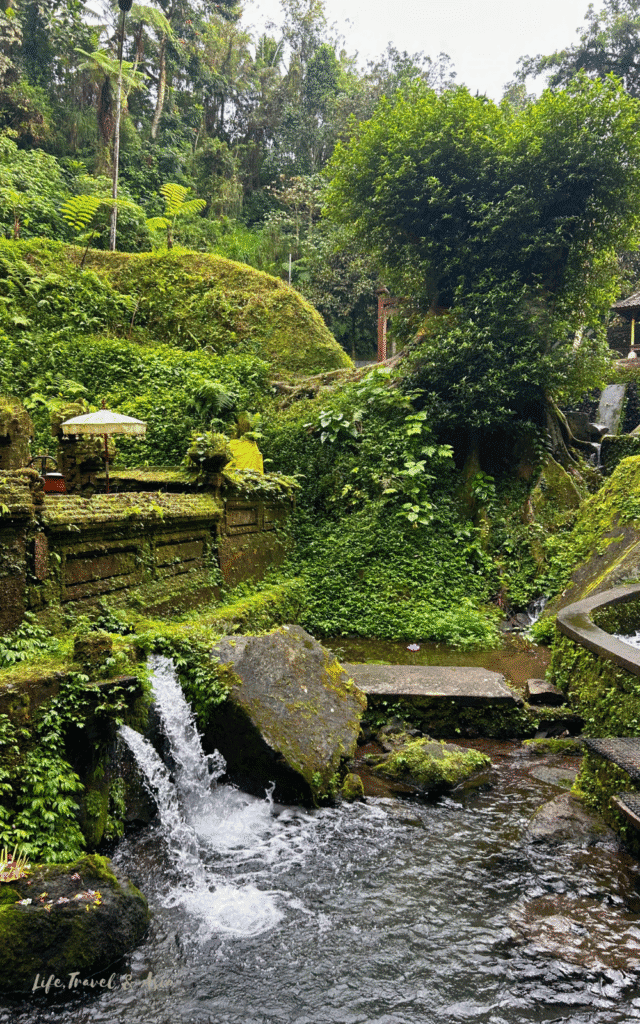
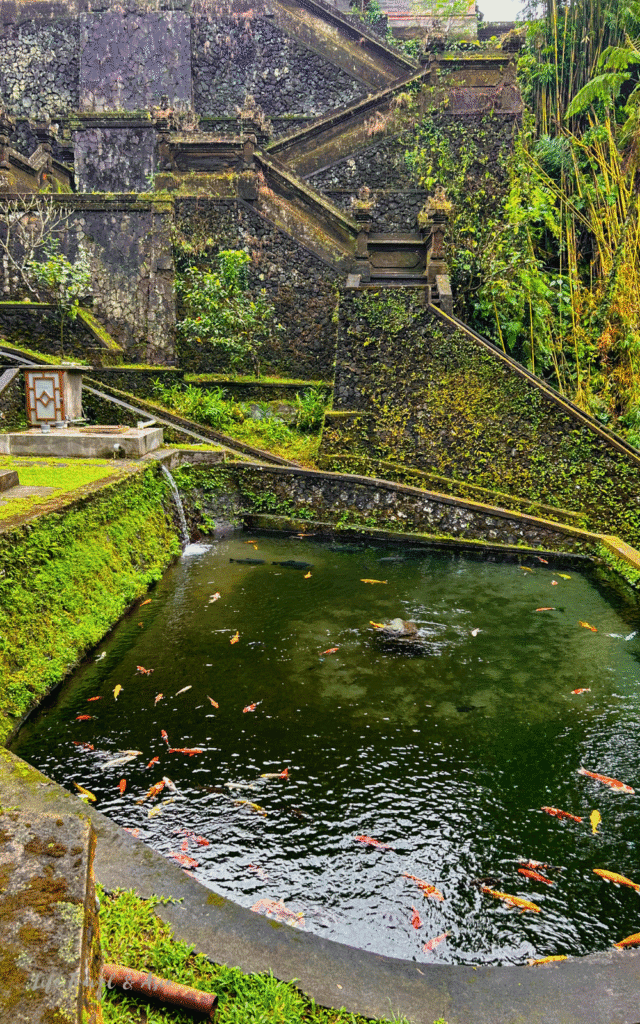
Here, surrounded only by nature and the sound of flowing water and tree branches swaying in the wind, you can truly have a peaceful, healing experience — one where you can focus on releasing your negative emotions and energy.
This is the exact experience I booked, and I highly recommend it if you want to live this ritual in the most authentic and quiet way. The guide was incredibly kind and carried such a clear, grounded spiritual energy, which made the whole experience feel even more sacred.
The way he explained things, his words, the way he chanted the mantras and guided the prayers — everything felt so intentional. It truly made me believe that what we were doing had a real impact on my inner world.
My Ceremony Experience at Pura Mengening
I had planned to practice the ritual once back in Bali, but — as with most things I do here — I hadn’t planned when.
The day before, I was reading an old blog post I had written about the best things to do in Ubud, and I came across the section about the purification ritual. Something within me immediately said: This is the right time.
So, without overthinking, I booked it. I already knew exactly which experience I wanted, having researched it beforehand. The timing couldn’t have been more perfect.
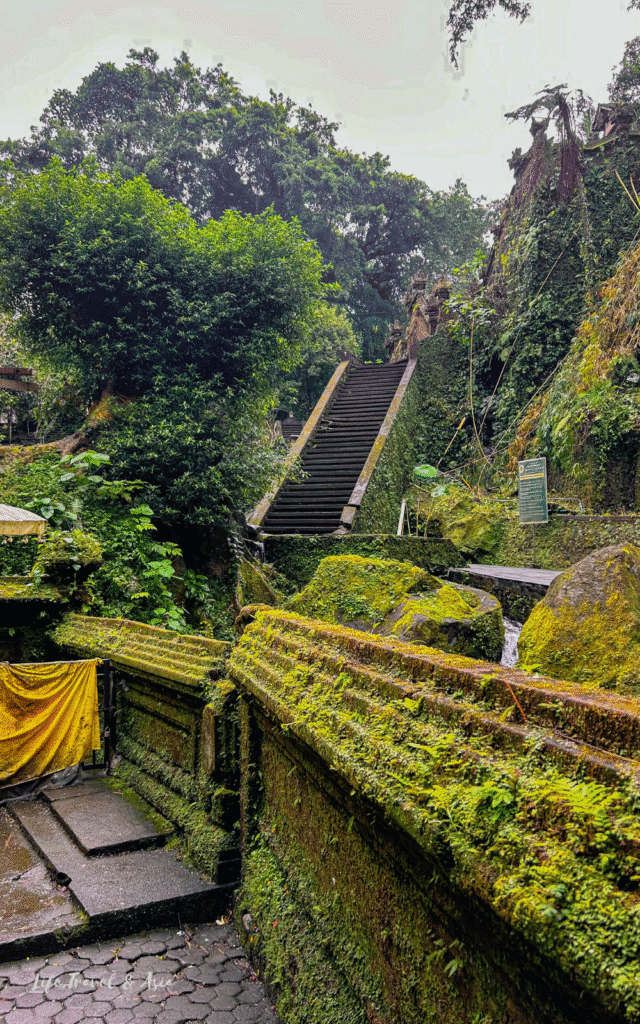
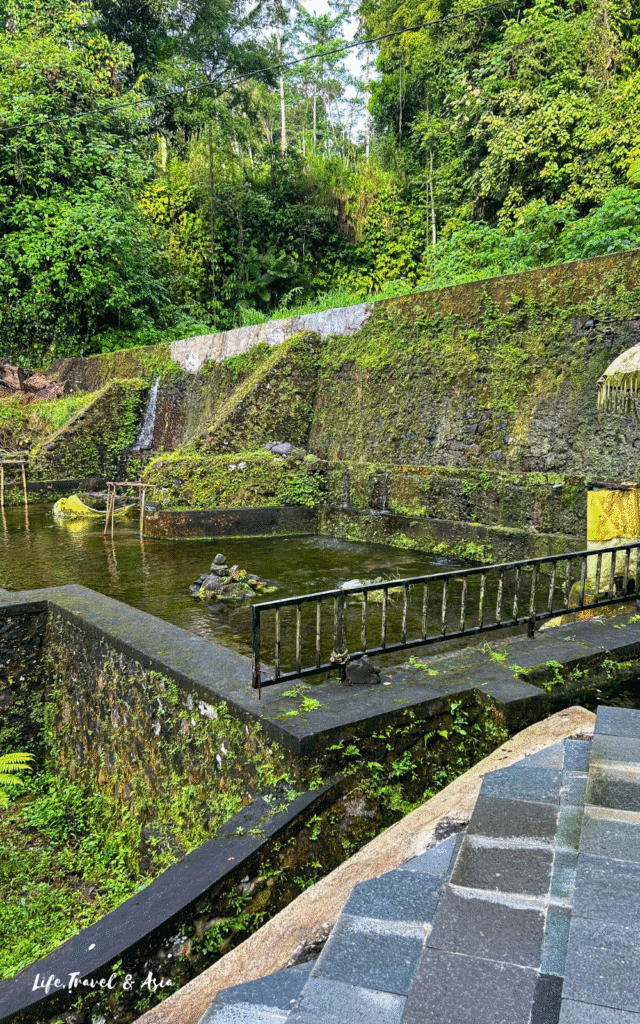
The ritual would mark the beginning of my first week in Bali. And, even though I didn’t know it yet, I was about to go through a tough night that triggered some wounds I still need to heal… I was ready for a new beginning.
The next morning, I arrived at the temple at 8 AM. It was just my guide and me. The temple was silent, except for the sound of the tree branches swaying in the wind and the water from the springs flowing through the temple.
Offerings & Prayers
The guide, a local Balinese, provided me with traditional clothing to change into just before entering the temple, as the ritual requires. He also brought three Canang Sari, the small daily offerings of gratitude to the gods.
While we explored the temple, he explained what the ritual was about and how locals practiced it — what they prayed for and what they asked for.
Then it was time to head to the altar. There, the guide prepared the offering by adding a small banknote, some snacks for the gods, and lighting an incense stick. You sit directly in front of the altar, with your own offering placed before you, ready for the mantra meditation and prayers.
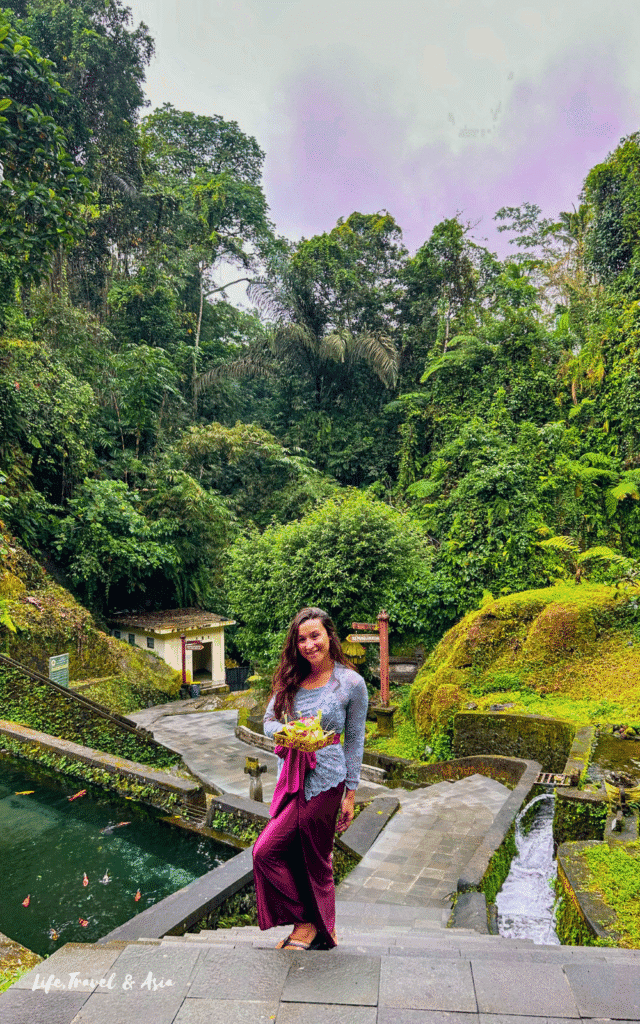
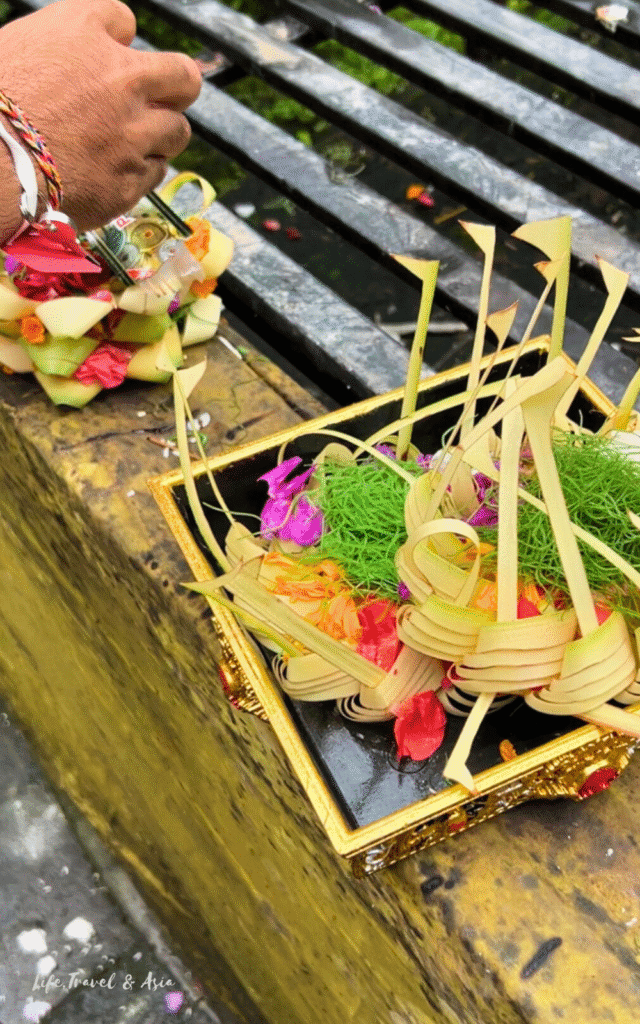
The guide chanted Hindu mantras for a few minutes. I used that moment to focus on gratitude for everything I have, for the experiences I’m living, for the fact that I now call this place home.
Then comes the moment of the prayers: gratitude for our ancestors, gratitude for the spirit of the sun, gratitude for the spirit of the water — all while picking flower petals from the Canang Sari and gently placing them behind your ears and on your head.
Finally, you ask to be released from what no longer serves you, and you express your desires for your life. Feeling deep, genuine gratitude for the life I’m living and everything I’ve been given made this moment incredibly emotional for me. And as your guide will remind you, you’re allowed to feel it all during the Melukat.
Bathing Under the Springs
After the prayer, the guide will provide you with a sarong to wear in the water, and you’ll have time to change.
You’ll then step into two natural pools, each with several water springs — I believe there were five or six — where you’ll perform the purification.
At each spring, you rinse your face three times, then place your head and back under the water. While doing so, you can imagine the water washing away everything you asked to be released — the negative emotions, the heaviness, the energy that no longer belongs to you. Keep focusing on that intention with every spring you move to.
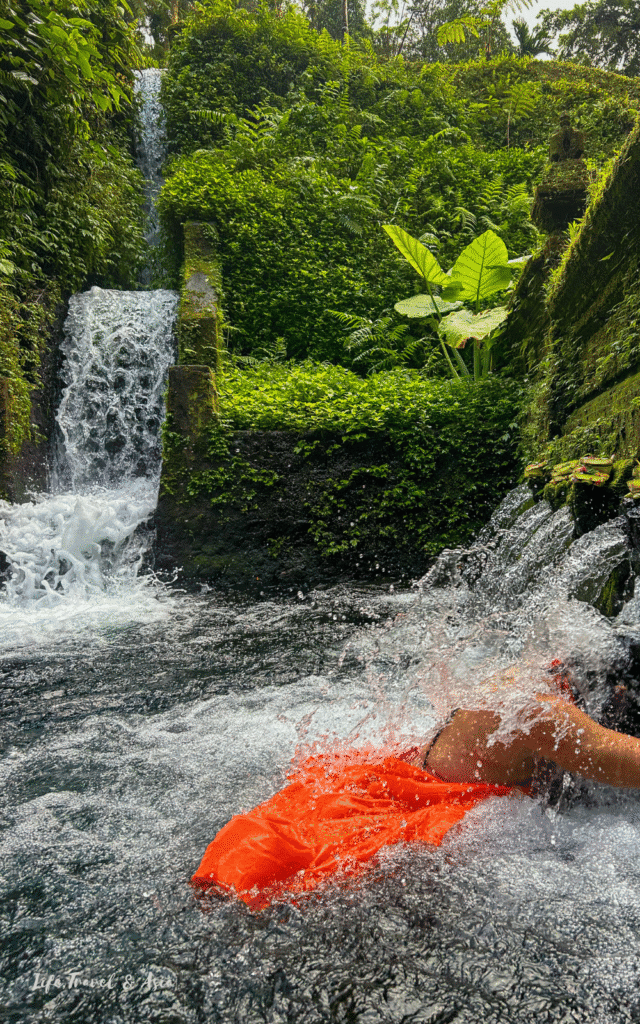
Final Prayer
Once you finish, you can change back into your dry clothes and return to the altar for the final prayer — a much shorter moment where you once again focus on gratitude and give thanks.
The ritual ends with the guide sprinkling holy water over your head. Locals traditionally drink the sacred water as part of the ritual. Still, my guide was very mindful that visitors might experience stomach issues if they do.
Finally, the guide places some rice on your forehead and your neck, near the jugular area. In Balinese tradition, putting rice on the forehead is believed to bring prosperity and good fortune, while placing it on the neck symbolizes happiness and connection to the soul. This practice is called Bija.
After the Ceremony
On the ride back to Ubud, I felt lighter and grateful — but I wasn’t ready for what came next.
As with any practice where you intentionally ask to release something, there’s often a purge. For a moment, everything seems to get worse, and all the things you wanted to let go of show up again, almost as if the ritual had brought them up to the surface so they could finally be cleared out.
And that’s precisely what happened to me — and it may happen to you too.
However, this morning, I woke up feeling truly lighter. What triggered me yesterday already feels distant, like an old memory.
Where to Book Your Purification Ceremony
Before booking your ritual — no matter where you decide to do it — make sure to check the reviews. You’ll want to experience an authentic Balinese Melukat, not some tourist trap focused on taking pictures without any meaningful explanation of what the ritual is really about.
And if you feel like you’re missing information or need more guidance, don’t hesitate to ask your guide — they’ll be happy to help. Honestly, the guide makes all the difference.
The first time I visited Pura Tirta Empul, aside from the chaotic atmosphere of the temple, our guide didn’t really help. He overexplained things, turning the whole practice into something overly complicated, which confused many of us.
This time, my guide only said what was needed. I asked a few questions when I wanted to understand more, but mainly, he focused on creating the right atmosphere and keeping the moment spiritual and intentional. And that made all the difference.
This is the tour I booked and highly recommend, for the guide, the organization, and the overall feel of the experience.
Extra Tips for Your Melukat Ritual
I highly recommend booking your ritual in the morning at the earliest available time slot. I did mine at 8 AM. By the time I finished, a group of school kids — probably 7 or 8 years old — arrived at the temple to practice the ritual. So, you can imagine how peaceful the atmosphere would’ve been if I had chosen a later time.
The temple is less visited than Tirta Empul, but not entirely isolated, especially for locals.
Also, make sure the tour you book is for a small group. I was lucky to be completely alone, probably thanks to the early time slot. This makes the whole experience so much more meaningful and far from chaotic.
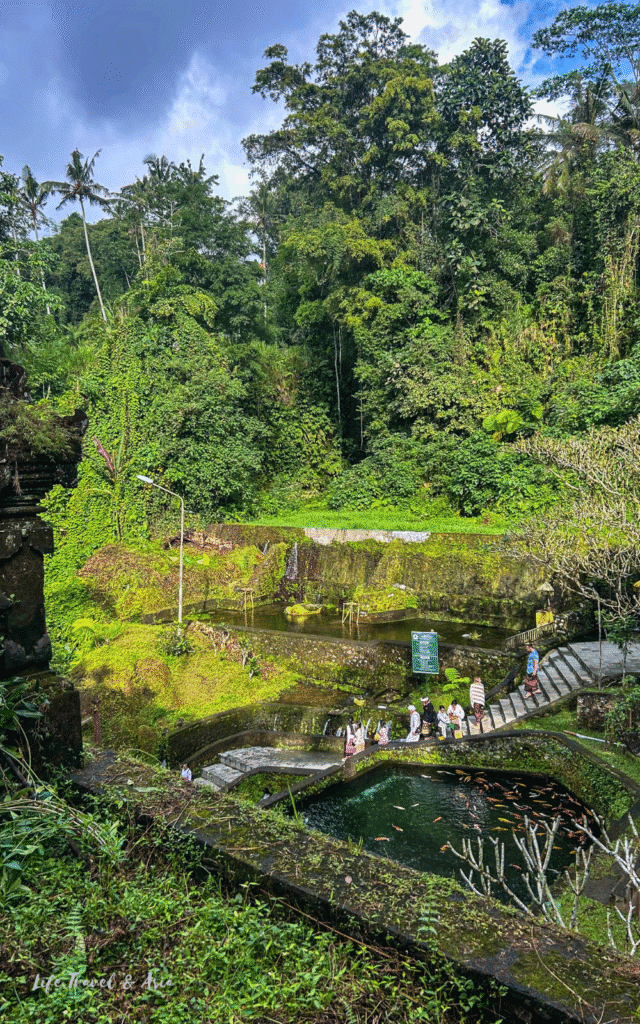
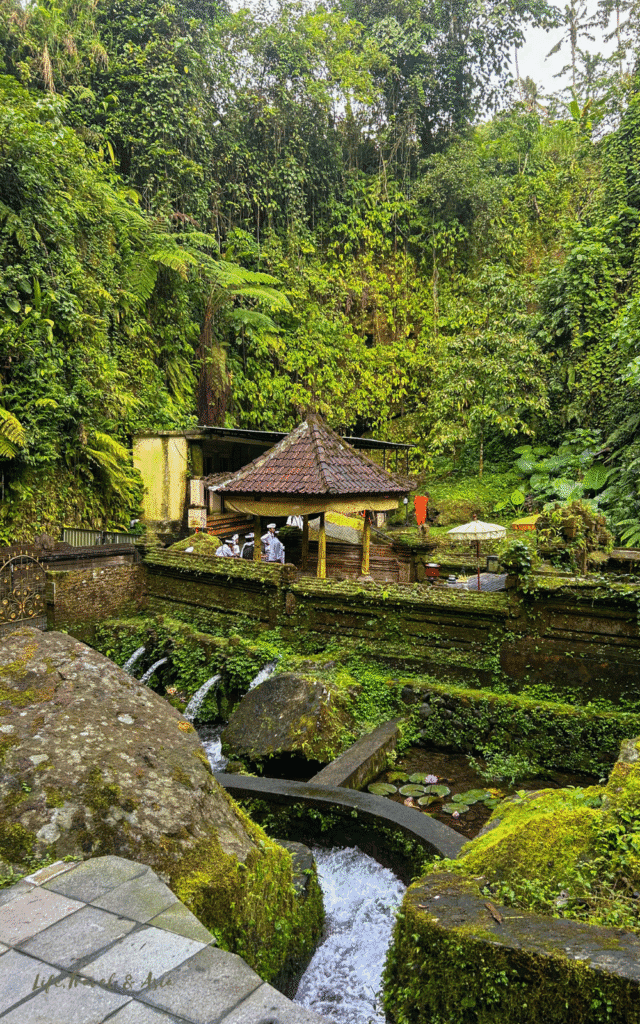
You can also visit the temple without participating in the ritual, but it’s not as common as it’s for Tirta Empul.
Read the reviews carefully before booking your Melukat. Look for keywords like authentic, peaceful, and meaningful. That’s the best way to ensure you’ll have the right experience, not just a rushed, touristy version of what should be a sacred moment.
Other Temples To Practice The Melukat Ceremony
There must be something special in the air around here because this area is filled with beautiful sacred sites where you can practice the Balinese blessing ceremony. Among them are:
Tirta Empul Temple (3 minutes by scooter): I actually wouldn’t suggest practicing the Melukat ritual at Tirta Empul — it’s usually way too crowded to enjoy the experience. But if you’re determined to do it, there’s a way: go as early as possible. This tour includes both a temple visit and the purification ritual at Pura Tirta Empul, and the first time slot is at 8:30 AM. I highly recommend booking that one — after that, it only gets busier, and the atmosphere changes.
Gunung Kawi Sebatu (10 minutes): This little temple tucked away in the jungle can be compared in size to Pura Mengening, but its architecture tells a different story. It’s quiet, surrounded by lush greenery and crystal-clear pools. I swear, I already loved it before I even got off my Grab bike. Here you can experience a private and peaceful Melukat ceremony. I witnessed a family of four doing it on a quiet Sunday morning, and it was a truly beautiful and intimate moment. This is the best option to book the Melukat ceremony at Gunung Kawi Sebatu.
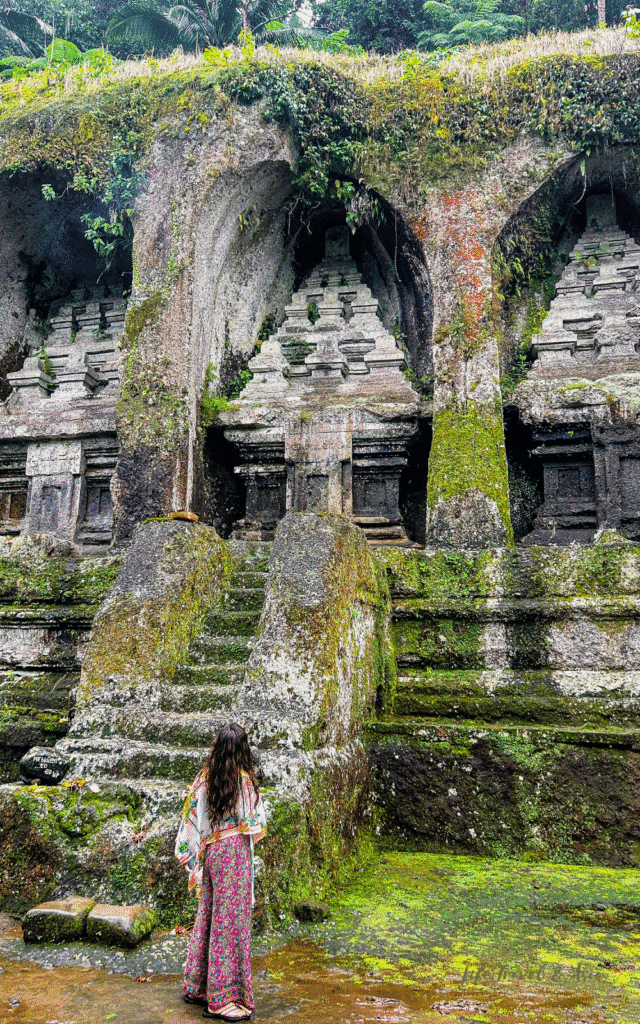
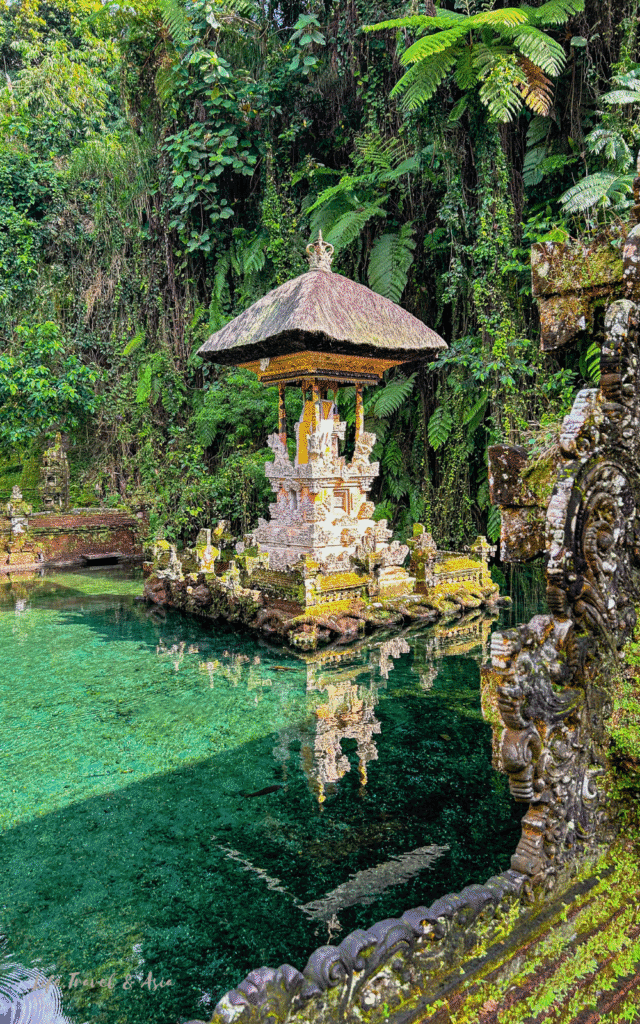
The day of the ritual, all the triggers from the night before came back — maybe they needed to be felt one last time before being released.
But the next morning, I woke up feeling new. Lighter. And whether it was the ritual or just a good night’s sleep… I like to believe that anything done with intention makes a difference.
That’s how I suggest you live your Melukat: with intention. It’s not just for cute photos — it’s for you. For releasing what’s holding you back and making space for new energy.
I hope this post helped you understand what to expect and find the best way to experience a meaningful Balinese purification ceremony here in Bali. And if you’re looking to explore more meaningful travel experiences, discover lesser-known temples, or get inspired by the breakthroughs from my life and journey around Asia, don’t forget to sign up for the newsletter below.
Join the Journey
Did you find it helpful? 📌 Save it on Pinterest!


